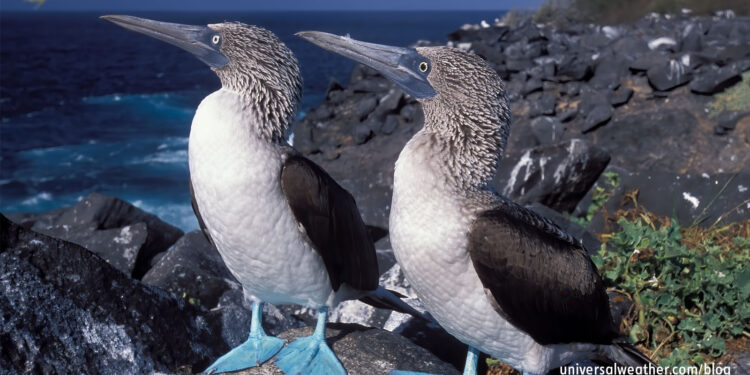Business Aircraft Operations to the Galapagos Islands – Part 2: Operating Considerations

This business aviation blog post continues from our article last week, entitled: “Business Aircraft Operations to the Galapagos Islands – Part 1: Airport Options.“
Pre-planning is imperative when traveling to the Galapagos Islands. Keep in mind that only private non-revenue, and not charter (non-scheduled commercial), general aviation operations may travel to the islands, with a limit of 20 passengers onboard the aircraft. Three weeks is recommended minimum lead time for the landing permit process.
The following is an overview of what you need to know:
1. Landing permit requirements
If you plan to operate to more than one airport in Ecuador, you’ll need a landing permit, which involves eight-12 business days to process. For operation to a single point in Ecuador, with a stop longer than 48 hours, landing permit lead time is only 48 hours. Landing permits may only be applied for Monday-Friday and are valid for +/- 72 hours. Short-notice permit requests may be possible at the discretion of the Civil Aviation Authority (CAA). Aircraft landing in Ecuador for technical purposes – or staying for less than 48 hours, with a stop at no more than one airport – do not require landing permits. For such operations advance notification must be made to CAA, and permission is granted verbally.
2. Permit documentation
Landing permit requests must be submitted with all required documentation, including airworthiness and registration certificates, aircraft insurance, pilot’s licenses (for Mexican-registered aircraft only), full schedule, operator information, and crew/passenger information. Complete crew/passenger information – full names, passport numbers and expiration dates, dates of birth, and nationalities – must always be submitted prior to operation. Permit revisions are necessary if there’s a change to itinerary, aircraft registration, date of operation, or origin/destination airports.
3. Flight plan procedures
Due to new regulations, you’ll also need to provide maximum takeoff weight, basic operating weight, takeoff fuel, fuel consumption en route, and payload details to your ground handler in advance. The flight plan needs to be given to your ground handler so he or she can have it stamped – to indicate that all airport charges have been paid – and have them file it with the airport flight planning office. You’ll also need to submit, with your flight plan, weight and balance and payload.
4. Cabotage considerations
Cabotage is a concern in Ecuador. Private non-revenue and charter aircraft may not pick up any passengers while in the country. This is strictly enforced, and there are no exceptions to this rule. Only passengers that have arrived on the aircraft may be transported within and out of the country.
5. Aviation fuel uplifts
Aviation fuel is not available on the Galapagos Islands, and it’s not possible to have fuel shipped in. Operators are advised to either tanker in fuel or schedule a fuel uplift on the Ecuadorian mainland. Guayaquil (SEGU) and Manta (SEMT) are recommended fuel uplift options when planning operations to the Galapagos Islands.
6. Aircraft inspections
In Ecuador – but not specific to the Galapagos Islands – airport authorities may board and inspect your aircraft at their discretion. In addition airport police conduct routine inspections on arrival of all aircraft, including tech stop movements.
7. Health and agriculture regulations
A disinsection certificate is required by sanitary control authorities for all arriving flights to the Galapagos Islands. The aircraft will be sprayed prior to departing the mainland to any of the Galapagos Islands. Disinsection fees range from 230 to 900 USD. During the disinsection process, passengers must wait in the VIP lounge. For inbound flights to the Galapagos, all garbage and food waste must be properly separated. Remaining food and non-used meals must be packed separately from recyclable materials, in transparent plastic bags. Coolers will be provided upon arrival for food and un-used meals that require refrigeration.
8. Crew options while in the Galapagos
Peak season for naturalist tours is December-May when the seas are calmest and the weather warmest. Summer months, July and August, are also popular as indigenous animals and creatures are most active during this period. Peak season for divers is typically July-November as this is when the local shark population is most apparent. Note that September-November is low season in this region and the time when most boats leave the islands for dry dock. For crews staying overnight, it’s worth making a visit to the giant tortoise breeding and rearing program at the Charles Darwin Research Center on Santa Cruz. Consider viewing the penguins on Isabela or Floreana Islands, and the Frigate birds on North Seymour, El Junco, or San Cristobal.
Conclusion
For any operation to the Galapagos, give yourself plenty of time to plan for landing permits and services, as well as for any aviation fuel and overnight crew accommodations that may be required on the mainland. It’s important that complete and correct documentation be provided for the permit process and that permit revision requirements be clearly understood.
Questions?
If you have any questions about this article, contact me at sonnymiller@univ-wea.com.




